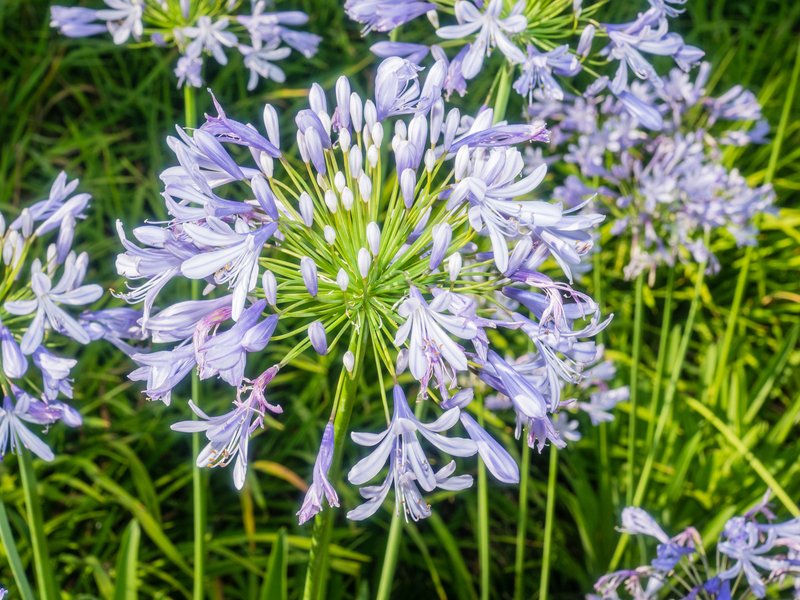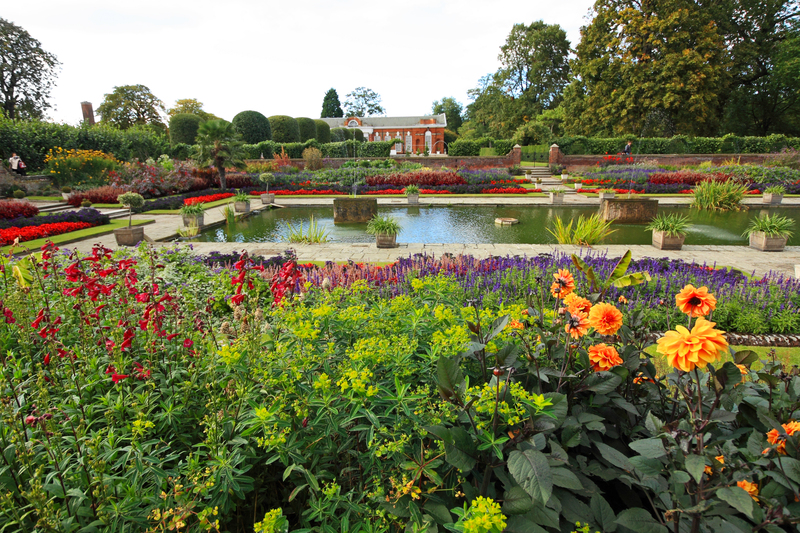Design a Lively Outdoor Environment for Children to Thrive
Posted on 24/09/2025
Design a Lively Outdoor Environment for Children to Thrive: A Comprehensive Guide
Creating a lively outdoor environment for children to thrive goes far beyond placing a swing or a sandbox in your backyard. It's about developing a holistic, dynamic space where kids can explore, learn, grow, and express themselves through play and interaction with nature. In this comprehensive guide, we'll cover all the essentials to design an outdoor space that encourages creativity, physical activity, and social development for children of all ages.

Why Outdoor Environments Matter for Child Development
Before diving into design tips, it's important to understand why outdoor environments are essential for a child's well-being. Outdoor play supports:
- Physical development through active movement and exploration.
- Mental well-being by reducing stress and supporting emotional regulation.
- Social skills through interactive play.
- Creativity and curiosity by offering diverse sensory experiences.
- Connection with nature, which fosters environmental awareness.
A thoughtfully designed outdoor play environment provides all of these benefits and more, helping children truly thrive.
Key Principles for Designing a Lively Outdoor Space for Children
Whether you have a sprawling yard, a compact courtyard, or even a rooftop, these guiding principles will help you create an engaging outdoor environment tailored to children:
1. Safety First: The Foundation of Every Outdoor Space
Safety must always be your starting point. Ensure all play equipment is age-appropriate, securely anchored, and routinely maintained. Surfaces under and around play areas should have impact-absorbing materials like rubber mulch, wood chips, or sand.
- Fencing or barriers for busy streets
- Soft, non-slip surfaces in high-traffic zones
- Shaded areas to prevent overexposure to sun
- Regular inspection for sharp objects, loose fittings, or toxic plants
2. Diversity in Play Opportunities
Variety keeps children curious and invested in their play. Incorporate a mix of play zones to stimulate different aspects of development:
- Active play elements: swings, slides, climbing walls, obstacle courses
- Creative spaces: sandboxes, water tables, mud kitchens, art easels
- Quiet nooks for reflection and sensory play: textured paths, butterfly gardens, shady benches
- Areas for group interaction, like open lawns or outdoor stages
By offering a blend of physical, creative, and social zones, you ensure the outdoor environment empowers every child to find their passion.
3. Embrace Natural Elements
A thriving outdoor environment for children leverages the beauty and wonder of nature. Integrate:
- Trees and shrubs for exploration and shade
- Edible gardens to teach about plants and nutrition
- Natural materials for play--logs, rocks, sand, and water
- Wildlife-friendly features: birdhouses, butterfly attractors, pollinator gardens
Experiencing the outdoors helps nurture an early appreciation for the environment and supports children's overall sense of well-being.
4. Flexibility and Adaptability in Design
Children grow and their interests change! Prioritize modular play zones or moveable items that can be rearranged for different needs or age groups. Items like movable balance beams, easily relocated sandboxes, or stackable building blocks encourage a sense of ownership and foster creative problem-solving.
5. Accessibility and Inclusion
A lively outdoor environment for all children should be available to those of all abilities:
- Include smooth, wide pathways for wheelchairs and strollers
- Use sensory features like textured walls, fragrant plants, or musical play panels
- Incorporate cozy, quiet corners for children with sensory sensitivities
- Choose universal play equipment that can be enjoyed by everyone
Smart Features and Ideas for Outdoor Spaces
Natural Playgrounds: The New Standard
Conventional plastic playsets are being replaced by nature-based playgrounds that spark wonder in children and blend harmoniously with their surroundings. Consider features such as:
- Fallen logs and balance beams for climbing
- Boulders for hopping and imaginative play
- Gardens and tree tunnels
- Mud kitchens for tactile learning
- Living willow huts for shade and hiding
Water Play Areas
Water play is universally loved and essential for early childhood development. Incorporate safe, contained water play zones such as:
- Splash pads with fountains
- Stream beds with pebbles and bridges
- Rain chains and water walls
- Shallow ponds with water plants (under supervision)
Creative and Art Stations
A space dedicated to art and expression strengthens creativity and fine motor skills. Ideas include:
- Outdoor easels and chalkboards
- Mosaic tables using safe, recycled materials
- Natural dye or eco-paint stations
- Sculpture gardens with clay or sand
Gardening and Growing Spaces
A garden is the heart of a thriving outdoor environment for children. Involve kids in:
- Planting and tending vegetable, herb, or flower beds
- Composting organic waste
- Butterfly and bee-friendly plant selections
- Harvest celebrations and taste tests
Outdoor Learning Zones
Unify fun and education with features such as:
- Weather stations for tracking temperature and rainfall
- Math trails with counting and sorting activities
- Reading circles under a big tree or covered nook
- Discovery tables with rock, leaf, and bug specimens
How to Involve Children in Their Outdoor Environment Design
The best outdoor environments are those that reflect children's interests and personalities. Involve them by:
- Letting them choose plants, colors, or play features
- Encouraging them to help with painting, digging, or crafting
- Asking for feedback about what they'd like to add or change
Seasonal and Year-Round Use: Plan for All Weather
To ensure your outdoor area is lively year-round:
- Install all-weather shelters like pergolas or gazebos
- Use evergreen foliage and structures for year-long interest
- Include storage for rain boots, hats, and tools
- Set up fire pits or heaters (with supervision) for cooler days
- Consider lighting for short winter days to extend playtime safely
Enhancing Safety While Fostering Independence
Safety and independence go hand-in-hand for a thriving outdoor play area. Here's how to promote both:
- Use clear sight lines so adults can supervise unobtrusively
- Offer graduated challenges--easier tasks for younger children, more complex for older ones
- Set ground rules collaboratively and review them as kids grow
- Teach children about plants, bugs, and respecting nature
Tips for Small Spaces: Maximizing Limited Outdoor Areas
Not everyone has a large backyard, but even modest spaces can become a vibrant environment for children to thrive:
- Use vertical gardens, trellises, and wall-mounted activities
- Choose foldable or stackable play equipment
- Opt for multi-functional furniture and storage
- Create cozy hideaways with tents, canopies, or upcycled furniture
- Rotate themes or movable features to keep the space fresh

Maintenance and Sustainability for Lasting Impact
A lively outdoor environment is a living, evolving space. Prioritize:
- Low-maintenance, drought-tolerant plants
- Durable, safe materials and fixtures
- Community clean-up and improvement events
- Encouraging composting and recycling in the play area
- Regularly seeking feedback from children and parents
Conclusion: Watch Children Flourish Outdoors
Designing a lively outdoor environment where children can truly thrive is one of the best gifts you can offer. With careful planning, creativity, and child-led input, your outdoor space can become a sanctuary for learning, play, adventure, and growth. Whether you're rejuvenating a community park, renovating school grounds, or enhancing your own backyard, prioritize safety, inclusivity, nature, and fun. Watch as children build memories, friendships, and a lifelong love for the natural world right outside your door.
By following these expert-backed principles and customizing your design to fit the needs of your family or community, you'll create a thriving outdoor environment for children--one that nurtures their bodies, minds, and spirits in every season.

